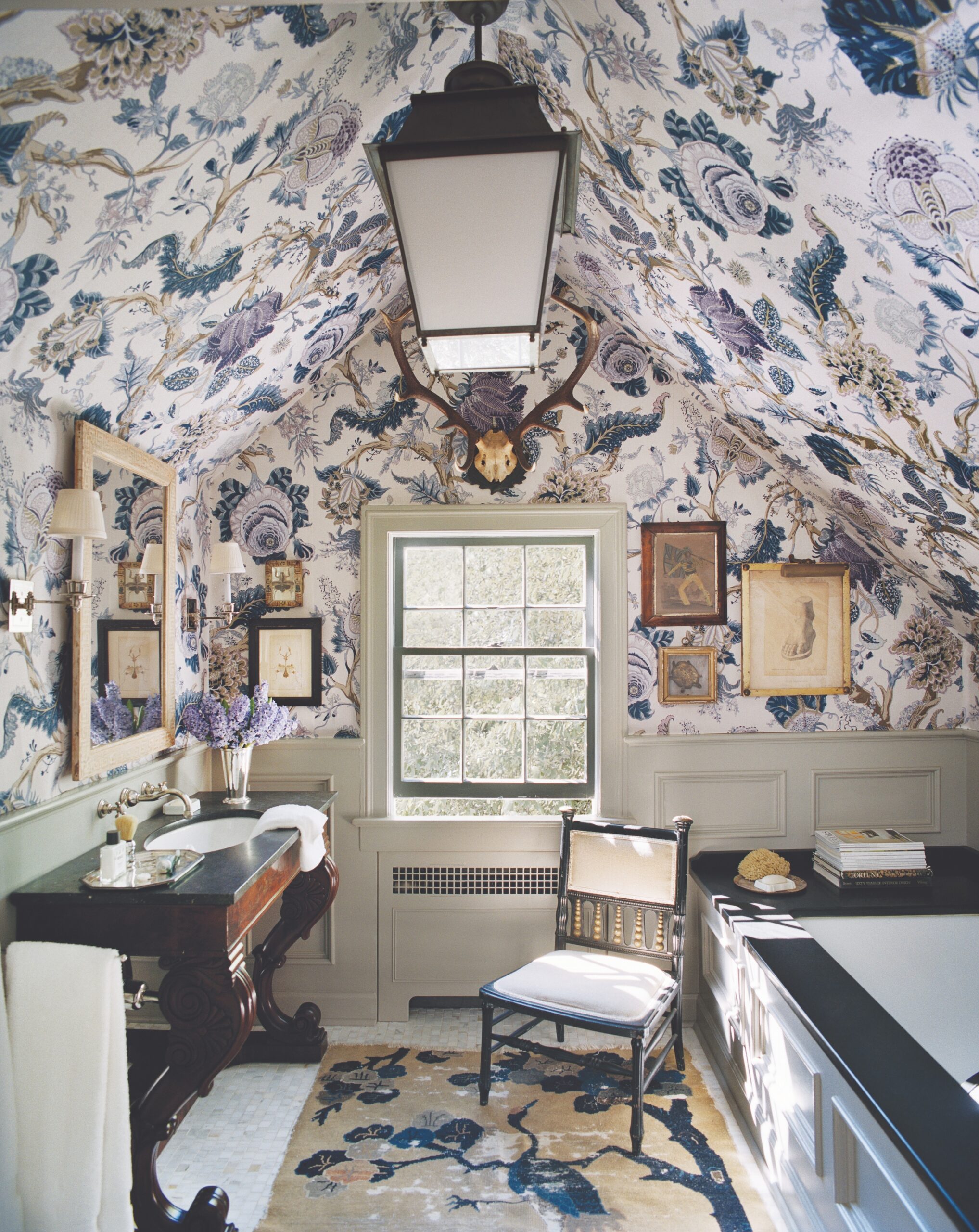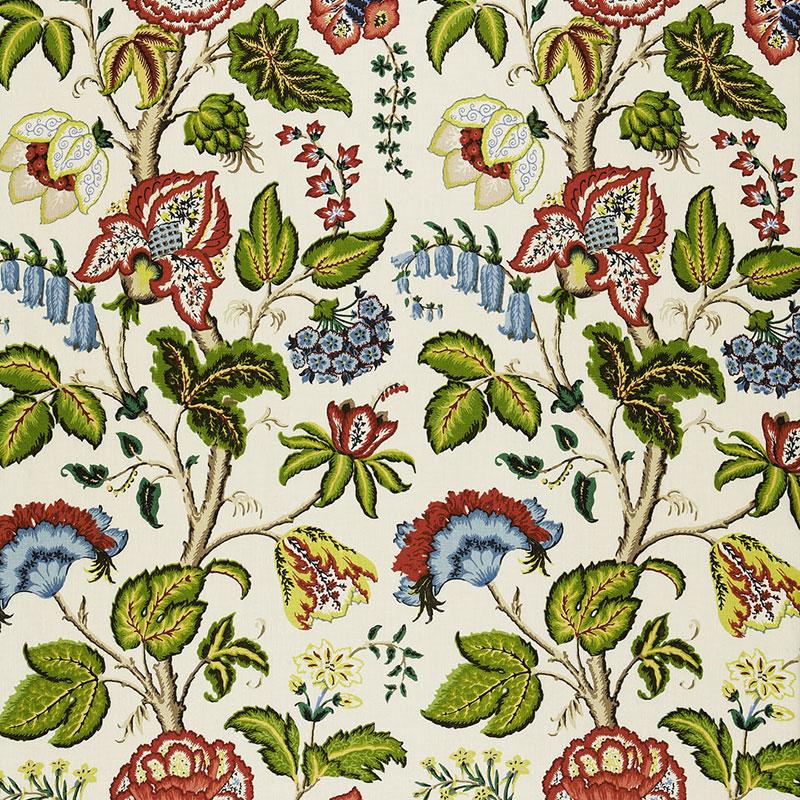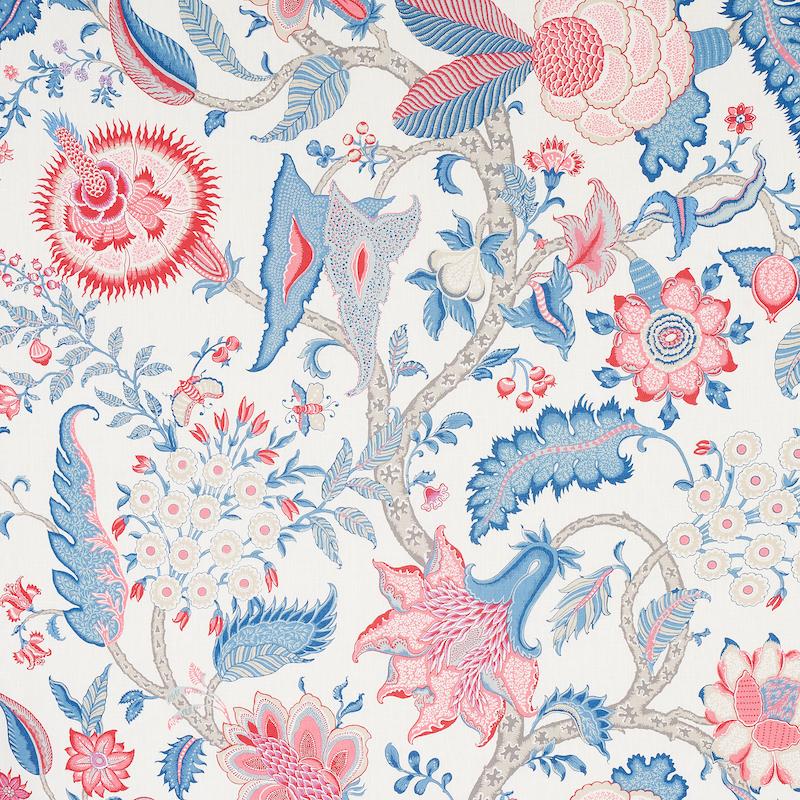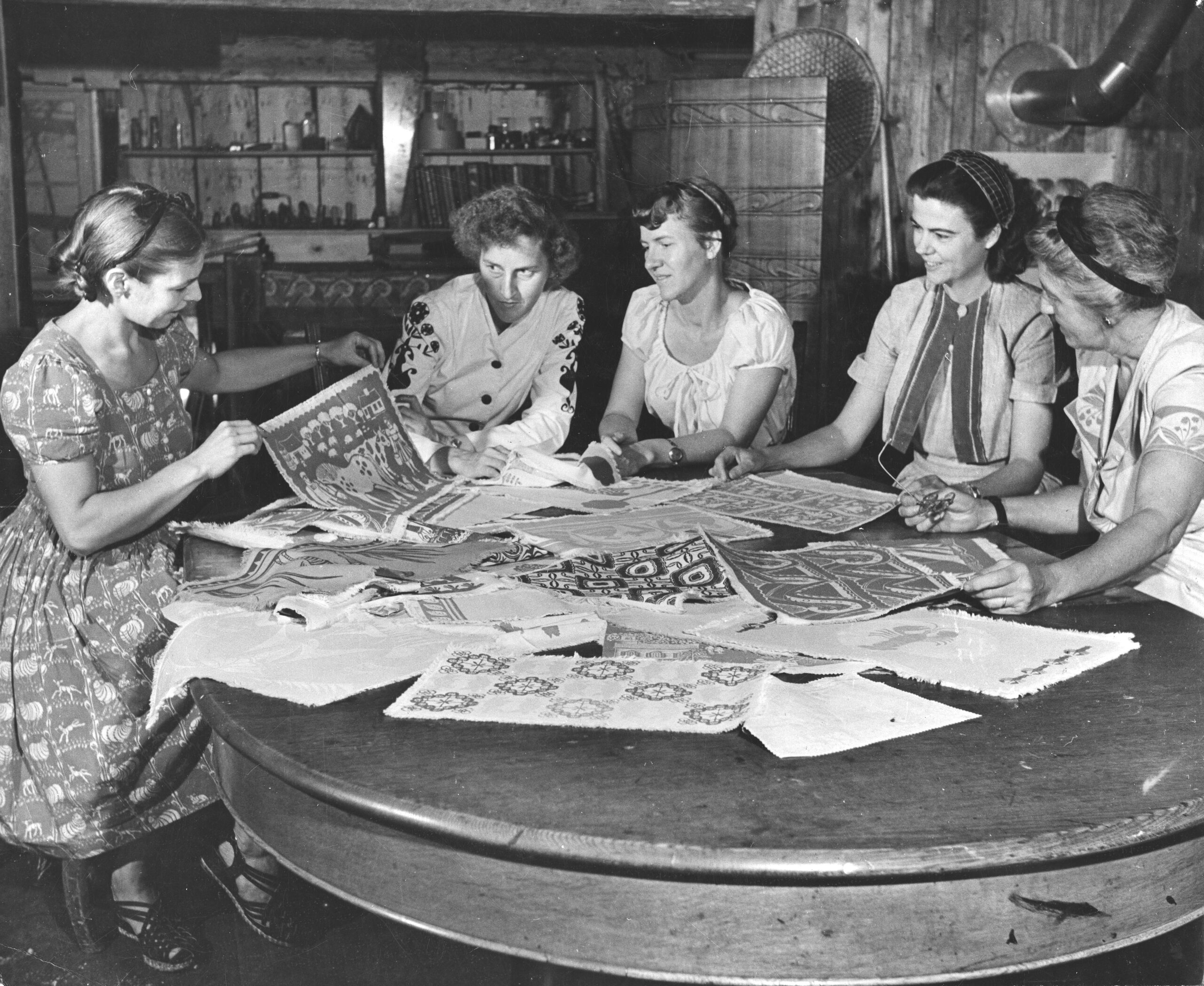Can a symbol that’s been kicking around since 4000 BC feel au courant? Take one look at the pattern-filled guest bedroom at Le Jonchet, the home of fashion icon Hubert de Givenchy outside Paris, and there’s no doubt: The tree-of-life motif is eternally chic. Done up in the 1980s, the room is swathed from top to bottom—walls, curtains, upholstery, bed, and canopy—in Le Grand Génois, a tree-of-life pattern first produced by the French fabric house Braquenié in the late 1700s and so beloved that Pierre Frey still produces it today. The overall effect is magical.
But to truly appreciate the pattern’s enchanting nature, you have to examine its roots, which run deep—several millennia deep, in fact. The tree of life is a symbol so universal that it has been found in artifacts from nearly every ancient culture. Likely first embraced by shamanic groups in Central Asia, the motif was found in Egypt, Greece, and Indus Valley civilizations by 2000 BC, and from there it spread into Christian, Jewish, Muslim, Hindu, and Buddhist art. It appears in ancient cave paintings, Egyptian tombs, Pakistani pottery, Lao temples, and rugs from the world over.

Based on a 1920s document in the Schumacher archive, Indian Arbre is a lush, large-scale floral inspired by the tree-of-life patterns that adorned traditional Indian cotton textiles known as palampores.
The modern version of the tree of life—like the one found in Givenchy’s guest bedroom, which features a white ground printed with curling branches and fantastical flowers—is a direct descendant of the palampore, a type of hand-printed or -painted cotton textile exported from India in large quantities beginning in the late 1600s. Embellished with vibrant tree-of-life motifs and traditionally used as bedcovers and wall hangings, palampores remained popular in Europe through the 18th century—so popular that Indian artisans began crafting designs specifically suited to European tastes. Traditional red grounds were replaced with neutral colors, patterns became more symmetrical, and Indian motifs took on a more Rococo style, mixed with elements from English embroideries and Chinese decorative objects.
The resulting motif was eventually applied to everything from hoop skirts to wallpaper to upholstery fabrics. The tree of life’s appeal also spread to America, where the pattern was fashioned into quilts and became a popular embroidery subject in the mid-1800s.

Embellished with a sinuous, stylized tree of life surrounded by an intricate floral border, this early-18th-century palampore from the collection of the Metropolitan Museum of Art is typical of the colorful cotton textiles produced in India for the European market.
Metropolitan Museum of Art; Purchase, Fernando Family Trust Gift, in honor of Dr. Quintus and Mrs. Wimala Fernando, 2010.Perhaps due to its long history, there are many interpretations of the tree of life’s symbolism. With branches that unfurl toward the sky and roots that reach far underground, it’s often seen as a link between heaven, earth, and the underworld. Some cultures see it as a representation of the cycle of life, while still others hold it up as a symbol of fertility. Oak trees have been associated with both Thor and Zeus, while the Book of Revelations describes a tree bearing 12 types of fruit that ripen during every month of the year.

Schumacher’s Sinhala Sidewall features a tree-of-life pattern derived from an antique French indienne, which was in turn modeled on similar textiles originally produced in India. Paired with a touch of modern glamour by Illinois-based design firm North Shore Nest, this traditional motif can be surprisingly versatile.
Aimée MazzengaCurrently enjoying a revival, today’s tree of life patterns are as wildly varied as the symbol’s long backstory would suggest. There are close cousins to the original 17th-century palampores like Indian Arbre, rich with feathery leaves and a bouquet of opulent flowers. The wallpaper designs Josephine and Hothouse Flowers offer a softer take, with more white ground and a limited palette. The tree of life can even read cool and contemporary, as in patterns such as Jacob’s Tree by London-based textile designer Neisha Crosland.

Mandevilla Embroidery is a scrolling tree-of-life pattern inspired by traditional crewel embroidery. The stylized floral forms and oversize scale give this familiar motif a modern feel.
Kevin KerrAnd maybe that’s the true secret to this ancient symbol’s longevity: It’s open to interpretation and nimbly bends to an artist’s whims. The fruits, flowers, and animals that nestle among its limbs can be realistic or magical. They can represent plenty, as in an Indian palampore, or they can embody the cycle of death and rebirth, as in artist Gustav Klimt’s early-20th-century Stoclet Frieze. Like the universe itself, it’s a pattern that contains multitudes.



















